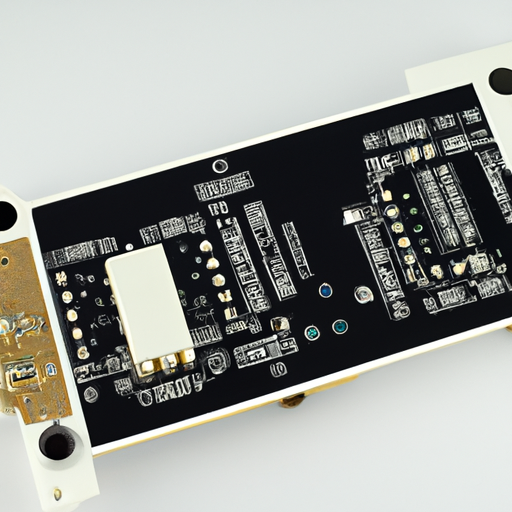

Choosing the right spot DSP (digital signal processor) can be a daunting task, especially with the wide range of options available in the market today. However, by considering a few key factors, you can ensure that you select the best DSP for your specific needs. In this article, we will discuss some important considerations to keep in mind when choosing a spot DSP.

2. Processing power: One of the most important factors to consider when choosing a spot DSP is the processing power of the device. The processing power of a DSP is typically measured in terms of MIPS (million instructions per second) or FLOPS (floating-point operations per second). The higher the processing power, the faster and more complex algorithms the DSP can handle. Make sure to choose a DSP with sufficient processing power to meet the requirements of your application.
3. Memory and storage: Another important consideration when choosing a spot DSP is the amount of memory and storage available on the device. Memory is used to store data and instructions for processing, while storage is used to store program code and data. Make sure to choose a DSP with enough memory and storage to accommodate the requirements of your application.
4. I/O capabilities: The input/output (I/O) capabilities of a spot DSP are also an important factor to consider. Make sure to choose a DSP with the right mix of analog and digital I/O ports to interface with your sensors, actuators, and other devices. Additionally, consider the communication protocols supported by the DSP, such as SPI, I2C, UART, and Ethernet, to ensure compatibility with your existing hardware.
5. Development tools and support: When choosing a spot DSP, it is important to consider the availability of development tools and support. Look for a DSP that is supported by a comprehensive set of development tools, such as compilers, debuggers, and simulation tools, to facilitate the development and testing of your algorithms. Additionally, consider the availability of technical support and documentation to help you troubleshoot any issues that may arise.
6. Power consumption: Power consumption is another important factor to consider when choosing a spot DSP, especially if your application is battery-powered or has strict power requirements. Look for a DSP with low power consumption to maximize the battery life of your device and reduce heat dissipation.
7. Cost: Finally, consider the cost of the spot DSP when making your decision. While it is important to choose a DSP that meets your requirements, it is also important to consider your budget constraints. Compare the prices of different DSPs and choose one that offers the best value for your money.
In conclusion, choosing the right spot DSP requires careful consideration of your specific requirements, processing power, memory and storage, I/O capabilities, development tools and support, power consumption, and cost. By keeping these factors in mind, you can select a DSP that is best suited to your needs and will help you achieve optimal performance in your application.
Choosing the right spot DSP (digital signal processor) can be a daunting task, especially with the wide range of options available in the market today. However, by considering a few key factors, you can ensure that you select the best DSP for your specific needs. In this article, we will discuss some important considerations to keep in mind when choosing a spot DSP.

2. Processing power: One of the most important factors to consider when choosing a spot DSP is the processing power of the device. The processing power of a DSP is typically measured in terms of MIPS (million instructions per second) or FLOPS (floating-point operations per second). The higher the processing power, the faster and more complex algorithms the DSP can handle. Make sure to choose a DSP with sufficient processing power to meet the requirements of your application.
3. Memory and storage: Another important consideration when choosing a spot DSP is the amount of memory and storage available on the device. Memory is used to store data and instructions for processing, while storage is used to store program code and data. Make sure to choose a DSP with enough memory and storage to accommodate the requirements of your application.
4. I/O capabilities: The input/output (I/O) capabilities of a spot DSP are also an important factor to consider. Make sure to choose a DSP with the right mix of analog and digital I/O ports to interface with your sensors, actuators, and other devices. Additionally, consider the communication protocols supported by the DSP, such as SPI, I2C, UART, and Ethernet, to ensure compatibility with your existing hardware.
5. Development tools and support: When choosing a spot DSP, it is important to consider the availability of development tools and support. Look for a DSP that is supported by a comprehensive set of development tools, such as compilers, debuggers, and simulation tools, to facilitate the development and testing of your algorithms. Additionally, consider the availability of technical support and documentation to help you troubleshoot any issues that may arise.
6. Power consumption: Power consumption is another important factor to consider when choosing a spot DSP, especially if your application is battery-powered or has strict power requirements. Look for a DSP with low power consumption to maximize the battery life of your device and reduce heat dissipation.
7. Cost: Finally, consider the cost of the spot DSP when making your decision. While it is important to choose a DSP that meets your requirements, it is also important to consider your budget constraints. Compare the prices of different DSPs and choose one that offers the best value for your money.
In conclusion, choosing the right spot DSP requires careful consideration of your specific requirements, processing power, memory and storage, I/O capabilities, development tools and support, power consumption, and cost. By keeping these factors in mind, you can select a DSP that is best suited to your needs and will help you achieve optimal performance in your application.